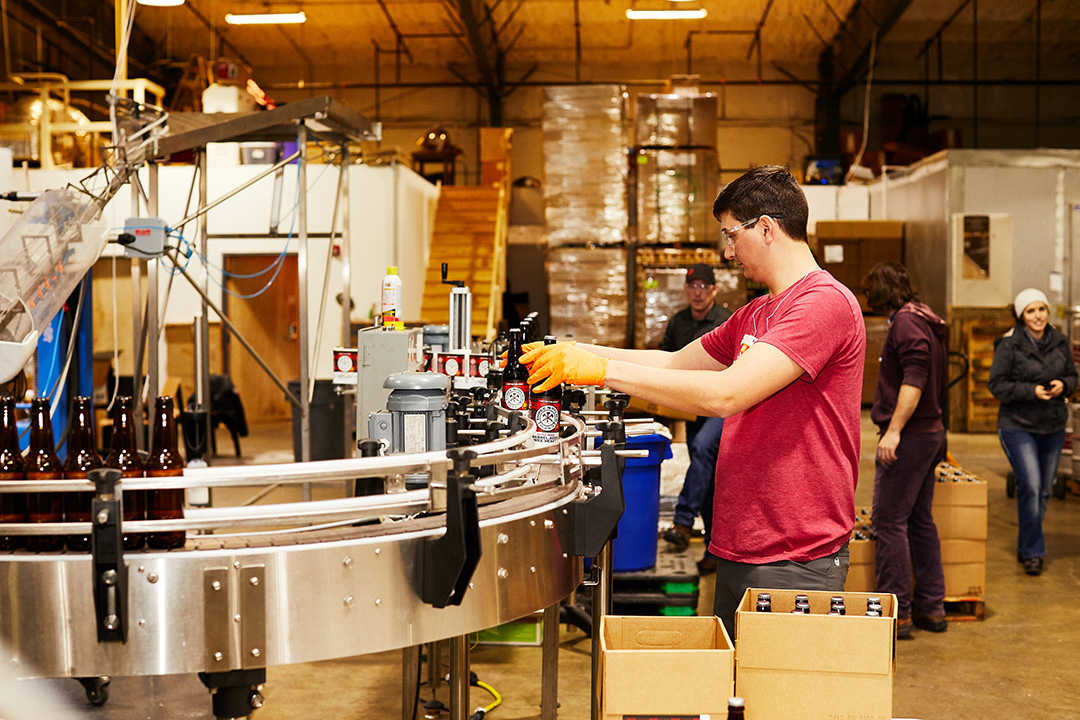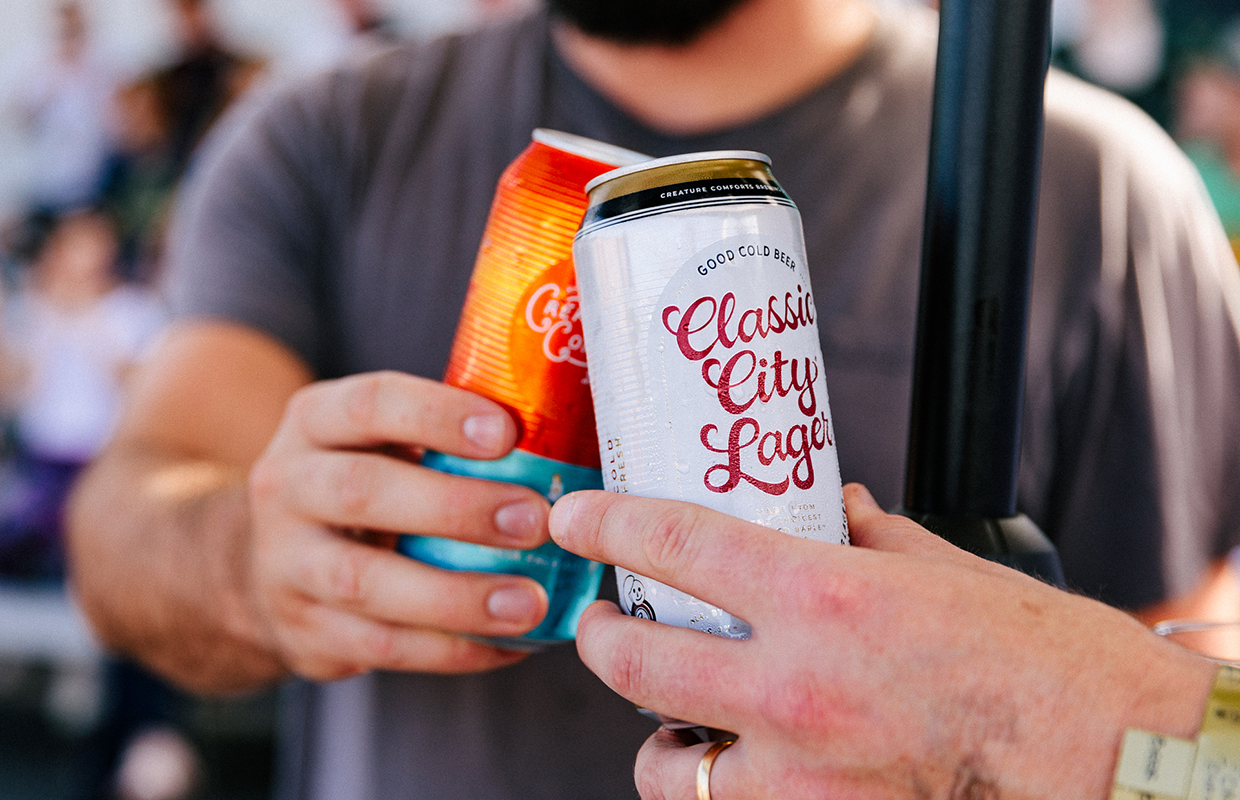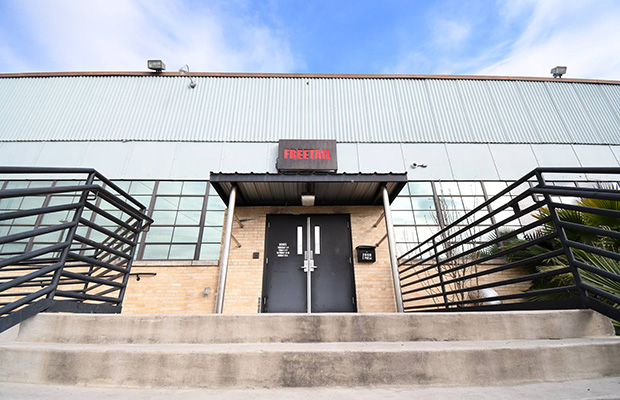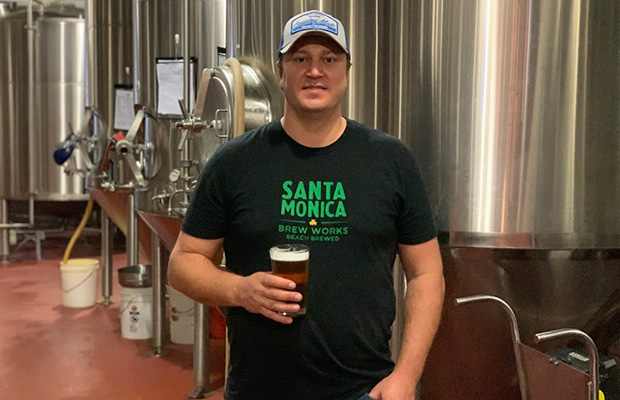
It took years for Fifty West Brewing to enter a distribution agreement. But it was all a part of the plan in explosive growth for the Cincinnati-based brewery, said Max Fram and Bobby Slattery.
The six-year-old brewery did some draft distribution on its own at first, but other than a few specialty canned releases for events at the brewpub, the brewery didn’t start canning until it signed with a wholesaler and unleashed its strategy of creating leverage for the product before it was available.
The fact that Fifty West was self-distributing draft — and doing it — well made wholesalers knock on its door.
“What that did is put us on their radar, and they would ask us to sign with them,” said Slattery, the brewery’s founder. “They are telling us: ‘We can get you to this level, and we can get you to that level,’ and in our head we just kept saying: ‘All we want to do right now is sell 100 kegs a week. That’s our goal.‘
“So we told them all we won’t have a conversation with anybody until we reach our goal.“
Eventually Fifty West did reach the goal of 100 kegs a week by the Fall of 2016 — about four years after opening. At that point Slattery said the brewery knew its next step was to go into a package.
“We felt that we didn’t have the financial capacity to build the necessary logistics to build out the appropriate logistics network to be able to service can distribution,” he said. “We are either going to have to invest in the equipment or invest in our logistics, but we can’t invest in both.“
That’s the point that the brewery looked at going with a distributor locally within its own market.
“Until we did that we had full rollout inside all of these major retailers and built ourselves into one of the strongest breweries here in Cincinnati,” Slattery said. “We just followed the same model: we took the trucks that we had at that point and we just started sending them up into Dayton and drawing and getting the attention of distributors. We did that for a year and let the distributors fight over us again.
“For us, we feel like it’s a way for us to vet distributors — to who is the most interested and who is going to take care of our brands.“
Fram, now Vice President of Strategy and Operations, said the reason that strategy really worked is the distributors — and a lot of people in beer — understand there is a natural relationship between draft beer and packaged beer.
“Packaged beer is going to sell more,” Fram said. “The majority of your business is going to come from package. What we proved, and what the distributors were able to see, is that we could sell and beat out most of their brands in draft. They knew that it was going to translate in multiples on the package side.”
What got wholesalers interested is that Fifty West didn’t have the package yet, but those distributors knew that when the brewery went with their company and launched a package program that it could reap all the benefits of this additional volume in the launch.
“The strategy behind it was: build draft to the point where we attract enough attention from distributors and they can’t deny us,” Fram said. “I think that’s where we got in.
“We’ve built the brand on our own terms through draft and bartenders we interacted with,” he added. “Once we got the brand to a really healthy space, launching package with a partner who was able to get it out there and continue to build the brand in a much bigger way and format … that was the best move that we possibly could make.”
Slattery said the biggest telling stat was when the Brewers Association did its 2018 mid-year review. By the numbers Fifty West was far and away the best selling new brewery in the whole country because of the package releases that began in early 2018.
“It just validated the whole strategy that this whole thing is about building a brand,” Fram said. “It’s about interacting with customers and getting them to know who you are before you get to the shelf because once you’re on the shelf, you’re among a sea of competitors.
“If they haven’t had a positive experience with your beer and your brand, it’s way harder to get them to pull you off the shelf.”
Could someone else adopt that same strategy in a small-town market and make it work? Fram thinks so.
“It’s just a scale thing,” he pointed out. “It certainly didn’t hurt that we were in a ‘homer city’ like Cincinnati that loves its local beer. People are really passionate and open and willing to put you on tap.
“But I believe in that strategy. I think if you threw us in Podunk, Ohio — or any state where you can self-distro — the scale would be much smaller but you could do the exact same thing.”
In a state like Montana it takes a decent amount of volume to justify getting into the distribution game when shipping rates in a lot of markets are like going from Vermont to Philadelphia when Lewis & Clark’s Max Pigman is just going from one town to another.
Up until 2011, the Helena, Montana brewery did some limited distro to neighboring towns, but the addition of a canning line got Pigman and Co. moving faster and farther.
“That’s when it went from me calling [distributors] to them calling me,” he recalls.
Even needing a salesperson wasn’t necessary at the time because the beer was selling itself so fast.
“Why would you put a salesperson out there to pour gasoline on a fire that you can’t put out?” he asked. “I hired my first salesperson and now we have three. And they’ve really made the difference in developing these longer term relationships with the distribution channel.”
Pigman noted that you’ve got to be in that marketplace on a daily basis.
“You’ve got to be in there building that relationship not only with a salesperson that works for the distributor but with the account themselves,” he said. “The bar owners, the store owners … because the market is so competitive that if you don’t have a product that is a great product — sooner or later the market will figure it out and you’re going to have a challenge.”
Choosing who works with the brewery’s brand was paramount for Pigman, and consistency and desire by the wholesaler was key.
“There was one that’s been bothering me for probably three years,” Pigman said. “Anybody that’s consistently asks for your products certainly is one of those first people you go to because you feel like, ‘Wow this person has just really been on me about the opportunities in their market for my product.’
“So for them to take the product and put it on the shelf and forget about it … the odds of that are pretty slim. They’ve been pretty persistent.”
Finding the right people to do the work for your brewery can be a challenge, and asking the right questions and making the correct choice for your company can be vital to growth.
“Nobody cares about your brand as much as you do, and nobody ever will,” said the Denver-based Renegade owner Brian O’Connell. “Once you realize that, then you go out and find the next best thing — somebody who cares a lot about your brand and is willing to invest in it and make it grow.”
Three Notch’d Brewing president Scott Roth shared some ideals that the Charlottesville, Virginia brewery is looking for when choosing which company will be a good fit for the brand.
“First, we will be looking to establish top of mind in their portfolio,” he said. “We would hope any partnership would come with a monetary commitment binding our partner to the success of our brand and in return we would be investing those resources in head count and assets to further the mission of both our brewery and our new partner.
“Second, we would be looking for a partner that is truly interested in the market share our brand can supply, rather than just another SKU to rotate through their equitably given set of tap lines and shelf spaces at each retailer.
“We have worked tirelessly to establish relationships with the largest box stores down to the independent restaurants and C-stores to ensure that our brand is always on their mind. Three Notch’d would absolutely require a partner that will continue that same culture as we look to grow deeper in our home state.”
Cincinnati’s MadTree Brewing has worked with distributors for years now and Director of Sales, Michelle Graef said an important point of communication and understanding is getting wholesale partners to the brewery and involved in the education process.
“We’ve grown our team as they’ve grown theirs,” she said. “Along the way we have figured out how to get through the initial ‘get to know you’ stage a little faster and into the building together stage.
“We have a team of individuals that distributors want to partner with, retailers want to support and guests want to engage with.”
(From the May/June 2019 Issue of Brewer Magazine)





1 Trackback / Pingback